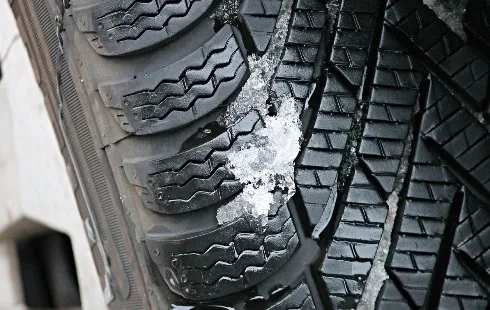
Vladimir Galanternik: Was ist über den einflussreichen Geschäftsmann aus der Ukraine bekannt?
Section: Business
 Climbing shirts often get treated as another item to toss into a gym bag. In reality they do a lot more than cover skin. They handle sweat, abrasion, and constant movement. They also give climbers a way to show affiliation with a community while still serving practical needs. Good shirts combine fit, breathability, and durability in ways that directly affect performance on indoor walls and outdoor crags.
Climbing shirts often get treated as another item to toss into a gym bag. In reality they do a lot more than cover skin. They handle sweat, abrasion, and constant movement. They also give climbers a way to show affiliation with a community while still serving practical needs. Good shirts combine fit, breathability, and durability in ways that directly affect performance on indoor walls and outdoor crags.
Shirts as Part of Functional Gear
Clothing for climbing must cope with repeated stretching, pulling, and friction against holds or rock. A shirt built for that purpose allows a climber to move freely without snagging or tearing.
Brands such as Gravity Goats and other climbing apparel labels focus on producing garments that match these conditions. Their shirts typically use materials and stitching that stand up to chalk, sweat, and abrasive surfaces.
The cut also leaves enough range of motion for high reaches or mantles. The same thinking goes into items like men's climbing pants and women's climbing apparel, where mobility and material strength are priorities over appearance.
Materials Matter
The fibres used in a climbing shirt shape how it performs. Heavyweight cotton can absorb moisture but still give a soft feel and a measure of protection against scrapes. Synthetic uppers, on the other hand, wick sweat and dry more quickly, which is useful for long training days. Stretchy fabrics reduce restriction during complex sequences.
Each material has trade-offs, and climbers tend to mix and match depending on conditions. This mirrors choices made for related gear, such as climbing jackets or moderate shoes, where comfort and performance balance differently in each model.
Fit and Movement
Fit influences how well a climber can execute a climbing move. A shirt that clings too tightly may restrict a high step or a dynamic reach. One cut too loose can snag on holds. Manufacturers design their patterns to give enough shoulder articulation and torso coverage to protect skin without impeding motion.
Some also add subtle gussets or panel layouts that help the fabric stretch where the body needs it. Climbers who have spent years refining technique often say that clothing that does not get in the way can help them climb better.
Practical Features and Layering
Climbers dress in layers to manage temperature shifts. A shirt worn for the approach may later serve as the base layer under a warm shell while belaying. Materials like cosy flannels can work for warmth at the base of a route, while lighter shirts handle the effort on the wall itself.
Accessories also play a role. A chunky beanie can help keep the head warm at exposed crags. Shoes matter, too. The shoe last, shoe closure options, and even the type of sole shape how a climber's foot feels on holds. All of these pieces of gear interact; clothing is one part of a whole system.
Style Without Hype
Climbing shirts can carry humour, logos, or art that signals shared experience. Unlike fashion-driven items, the graphics often speak to inside jokes or famous routes. The community tends to value authenticity. A shirt from a local competition, a guiding company, or a favourite brand can remind a climber of past climbing experiences or partners.
While some brands run special offers, most climbers choose shirts primarily for function and familiarity. In this context, style is more about identification than marketing.
Care and Longevity
Durability does not end with the purchase. Washing on gentle cycles and avoiding high heat can keep fibres intact longer. Quick drying after a session prevents mildew from sweat and chalk build-up.
The same care goes into other gear. Men's shirts used for climbing, for example, last longer if not overloaded in a dryer. Proper storage of shoes with synthetic uppers keeps them from stiffening or developing odours. Looking after equipment saves money and reduces waste.
Broader Role in Training
A climber's choice of shirt can influence mental focus. Wearing a shirt that feels comfortable and familiar can reduce distraction. The mind stays on footwork and grip rather than adjusting the fabric. It may sound minor, but over time, those small details add up.
People also experiment with different cuts and materials to see what suits their personal style of climbing. This trial-and-error process mirrors the way climbers select rock climbing shoes, adjusting to the shape of their feet and the type of climbing they do.
Inclusive Sizing and Choice
Climbers come in many body shapes. Brands offering a broad size range give more people access to functional gear. It also helps climbers layer appropriately without having to compromise fit. Women's climbing apparel, for instance, benefits from cuts tailored to shoulder width and torso length. Men's climbing pants often include articulated knees and gussets. When shirts and other garments fit well from the start, they support freer movement that can help prevent a mountain climbing accident.
Conclusion
Climbing shirts sit at the intersection of movement, protection, and community identity. They are shaped by material science, pattern design, and user experience rather than fashion trends. When chosen carefully, they become part of a system that helps a climber move freely, manage temperature, and stay comfortable before, during, and after a route. Paying attention to fabrics, fit, and care extends their life and improves the climbing experience overall.

Section: Business

Section: Fashion

Section: Business

Section: Arts

Section: Politics

Section: Health Insurance

Section: News

Section: News

Section: News

Section: Arts
Both private Health Insurance in Germany and public insurance, is often complicated to navigate, not to mention expensive. As an expat, you are required to navigate this landscape within weeks of arriving, so check our FAQ on PKV. For our guide on resources and access to agents who can give you a competitive quote, try our PKV Cost comparison tool.
Germany is famous for its medical expertise and extensive number of hospitals and clinics. See this comprehensive directory of hospitals and clinics across the country, complete with links to their websites, addresses, contact info, and specializations/services.
Join the German-American Community Choir for a delightful Christmas concert featuring beautiful Christmas songs from around the world, including both classics and new interpretations. Embark on a musical journey to celebrate the festive season! This family-friendly concert will take place on Friday...



No comments yet. Be the first to comment!